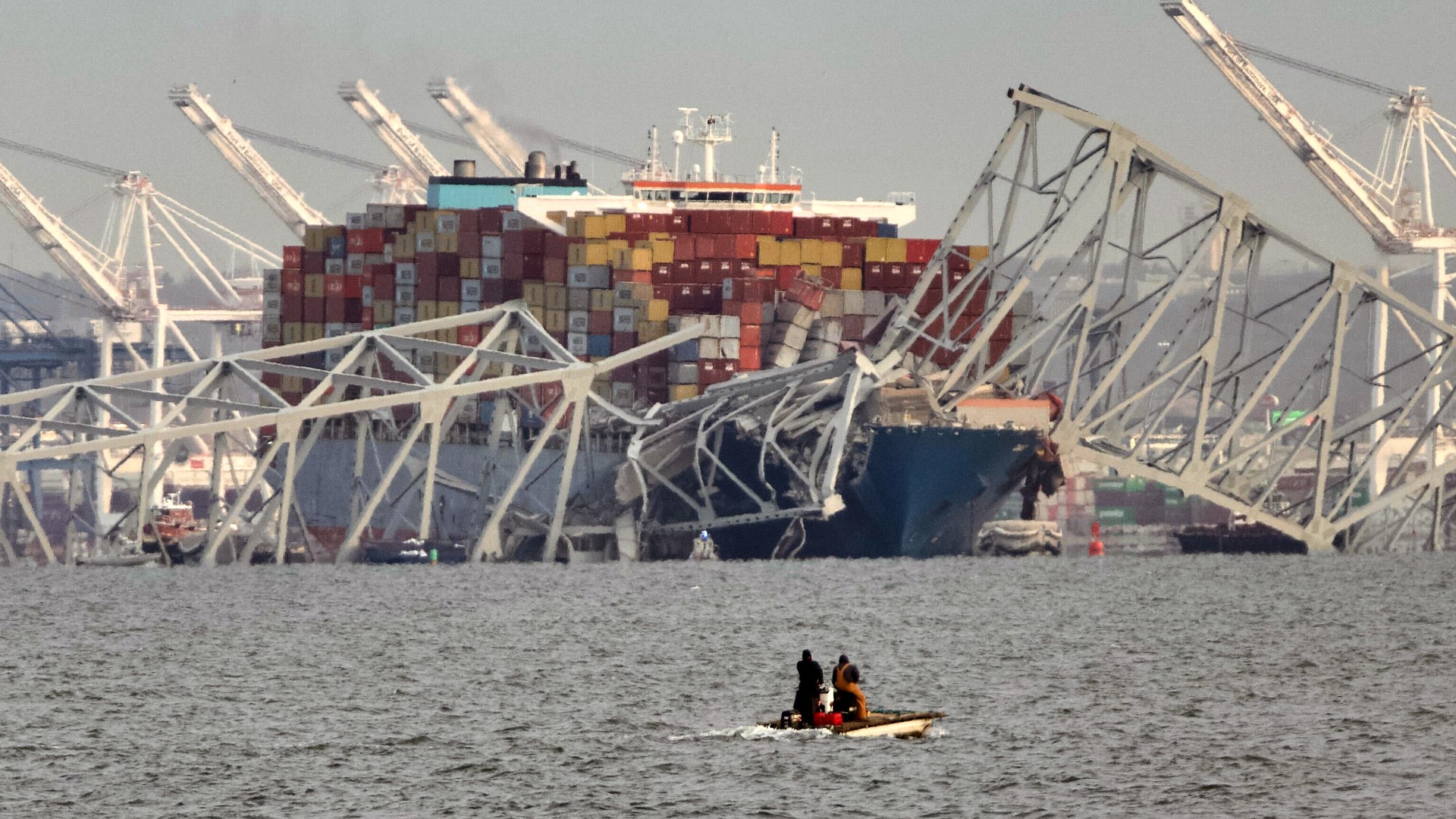BALTIMORE — In the wake of the collapse of the Francis Scott Key Bridge, the Port of Baltimore announced that all vessel traffic into and out of the port has been suspended until further notice.
According to Reuters, there are currently more than 40 ships inside the Baltimore port, including small cargo vessels and pleasure craft. At least 30 other ships had signaled their destination was Baltimore, Reuters estimated.
Here's a brief history of the Port of Baltimore:
The Port of Baltimore: A Long History
The Port of Baltimore began as an access point for Maryland's tobacco trade with England as far back as 1670. It was first designated as a port of entry by the General Assembly in 1706.
Fells Point, the deepest part of the harbor, was home to numerous shipbuilders, and later would gain renown for its Baltimore clippers, as well as the Continental Navy.
Its natural depth made Fells Point a center for trade and shipping, and, in 1773, it was incorporated into Baltimore City.
As Baltimore grew into a city during the Revolutionary War, the Port of Baltimore became a center for the trade with the West Indies that supported the war effort. To protect the Port, an earthwork fort, known as Fort Whetstone, was erected in 1776 on Whetstone Point, the narrow peninsula between branches of the Patapsco River.
In 1793, as England warred with France, the state of Maryland relinquished control of Fort Whetstone to the federal government. To protect coastal shipping and cities, the federal government began construction in 1794 of a series of Atlantic forts, among them Fort McHenry. To protect Baltimore's Port, Fort McHenry was constructed on the site of the Whetstone earthworks in 1794.
Although Baltimore was a port long before it was a city, the state of Maryland delayed its role in port development until 1827.
In 1830, the U.S. Army Corps of Engineers surveyed Baltimore Harbor, establishing the central lane depth at 17 feet. Though dredging had been conducted earlier, the federal River and Harbor Act of 1852 first authorized dredging to obtain specific dimensions. The Act authorized a channel, some 22 feet deep and 150 feet wide, from Fort McHenry to Swan Point.
To decrease sediment accumulations and reduce the need for dredging, in 1869 Brewerton Channel was created. Also 22 feet in depth, this new channel was 200 feet in width. Over the years, new channels have been added, deepened and widened. A 50-foot turning basin was dredged in the Fort McHenry Channel in 1999.
Today, the main channel reaches 51 feet down and 700 feet across. Brewerton Channel was widened further to 50 feet deep and 700 feet wide in 2001. In 2012, the Seagirt Marine Terminal berth also was deepened to 50 feet. By mid-2015, the access channel to the Seagirt Terminal was widened to accommodate the world's largest container ships.
The Port of Baltimore continues to improve its operations today. A second 50-foot container berth to accommodate two supersized container ships in the Port at the same time was finished in April 2021.
In November 2021, the Howard Street Tunnel began to be reconstructed in order to move double-stack train cars. Four Neo-Panamax cranes began operating at the Port's terminals in May 2022 with plans for additional cranes to be added later. Ongoing berth reconstructions are planned to increase capacity for larger and heavier roll on/roll off cargo, such as combines and harvesters.
In recent years, the Maryland Port Administration has been recognized in its efforts to clean up the environment in its public marine terminals, as well as in the surrounding area.
In Fiscal Year 2023, some 11.7 million tons of general cargo were handled by the Port's public terminals, a new record from the 11.3 million tons set in 2022.
Along with cargo terminals, Baltimore also has a passenger cruise terminal, which offers year-round trips on several lines, including Royal Caribbean, Carnival, Norwegian, American and Phoenix Reisen.
In 2023, cruises carrying more than 444,000 passengers departed from the Port of Baltimore's cruise terminal. The Port of Baltimore's cruise industry supports over 400 jobs and brings in over $63 million to Maryland's economy.
Source: Maryland.gov

